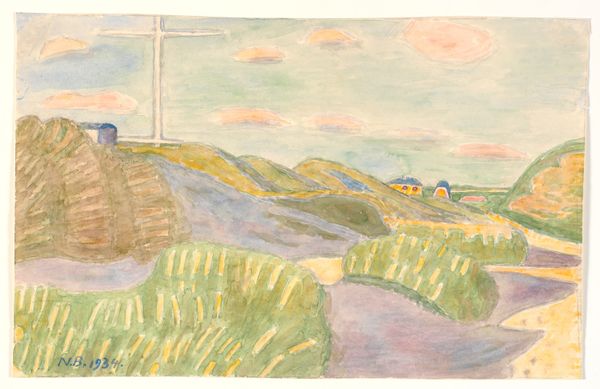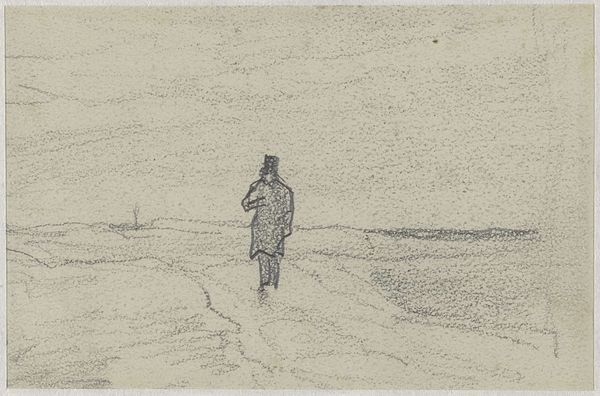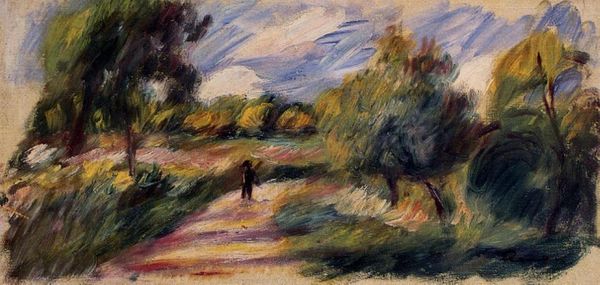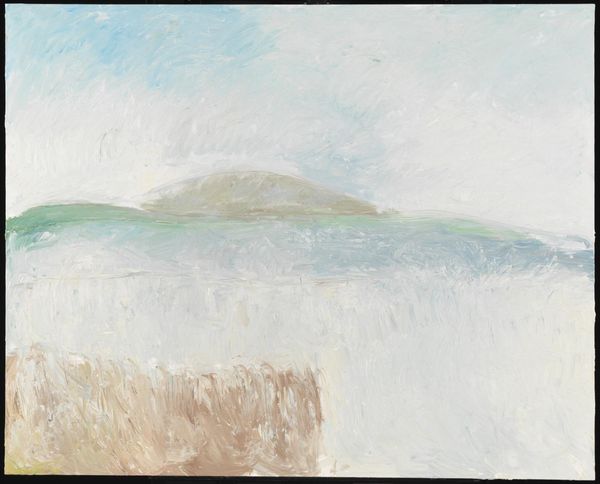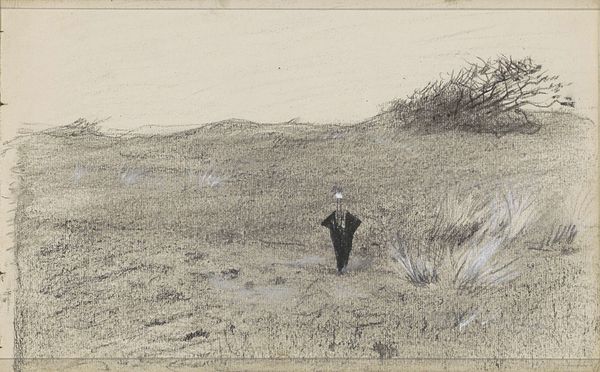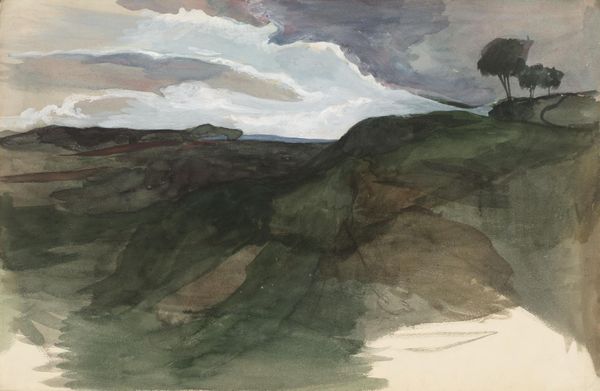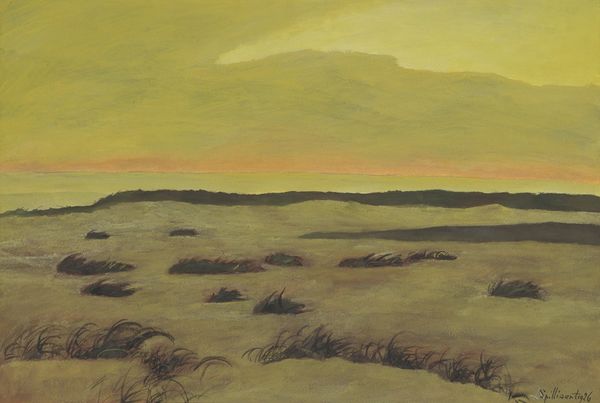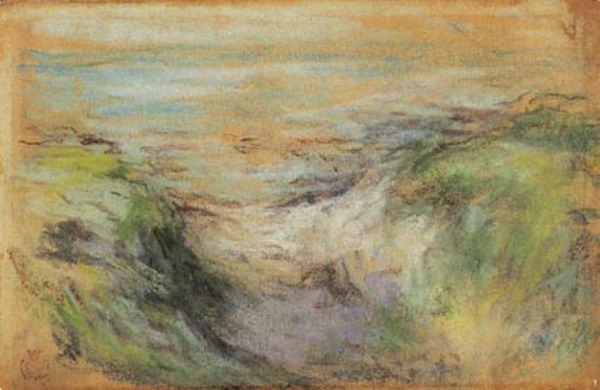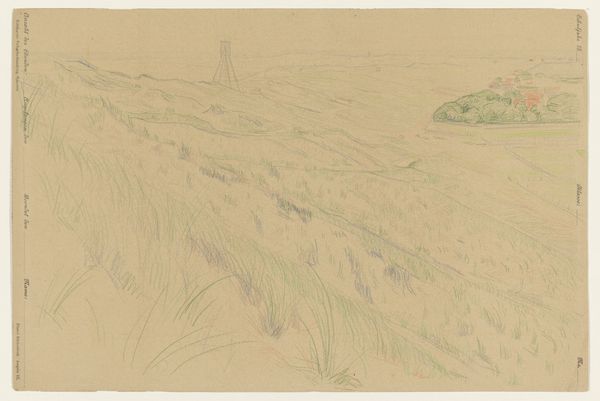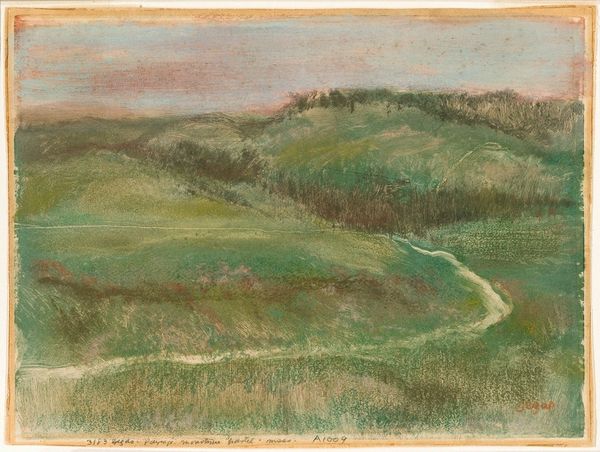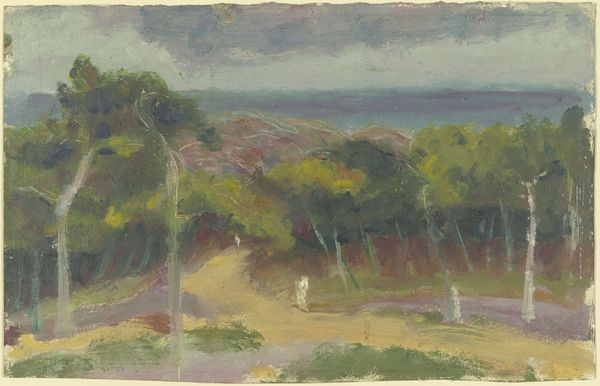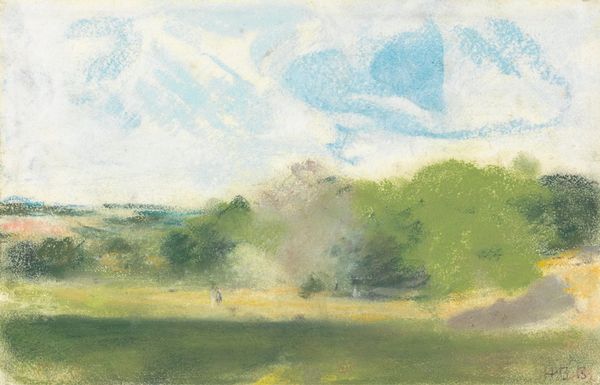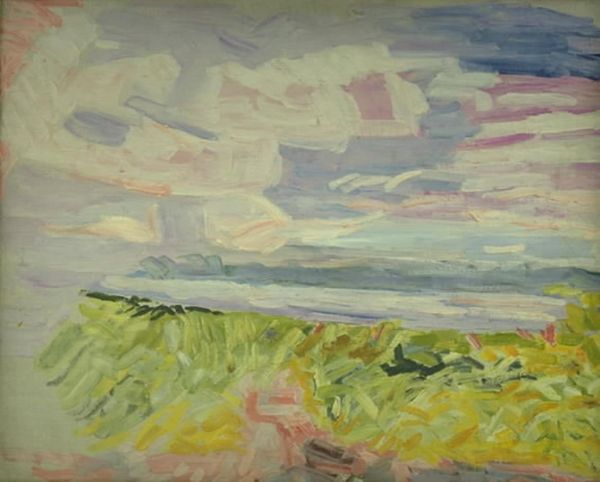
Copyright: Public Domain
Editor: Here we have Wilhelm Gutmann’s “Dunes in the Netherlands,” a pastel and charcoal drawing made en plein-air in 1908. I'm struck by how the figure seems to be consumed by the landscape itself; it’s both peaceful and unsettling. What's your take on this piece? Curator: Considering it's en plein air, what kind of labor went into producing a pastel drawing in the landscape, and how does that relate to the social context of the time? Gutmann wasn’t just depicting nature; he was interacting with it, transforming raw materials like charcoal and chalk into a consumable image. Editor: That’s a great point. I hadn’t considered the transformation of the materials like that. So, the social status of landscape art and this type of open air production elevates the practice from a simple pastime activity. Curator: Exactly! Consider also that, by choosing pastel, a medium readily portable and quick to use, Gutmann participated in a burgeoning market for easily accessible art. The "romantic" style speaks volumes. Romanticism often idealized nature as a refuge from industrialization, but here, it becomes a commodity – something produced and consumed. Editor: The drawing seems very simple and ephemeral, and it might reflect an interest in depicting nature, or being consumed by it… it's amazing to me, especially knowing more about it. Curator: Indeed. The landscape, and the human interaction with it, becomes another form of consumable material, framed and sold for a profit. What new details do you notice now? Editor: Looking closer, the loose strokes and hazy quality maybe critique our ability to capture the landscape—maybe highlighting an emotional experience of this landscape. That challenges its own purpose of commercialization by questioning if landscape art really shows nature at all. Curator: Precisely. Gutmann makes us confront the social conditions that turn nature into an object of artistic labor. Editor: Wow, I never thought about landscape art in this light. It completely changes how I see these kinds of works.
Comments
No comments
Be the first to comment and join the conversation on the ultimate creative platform.
